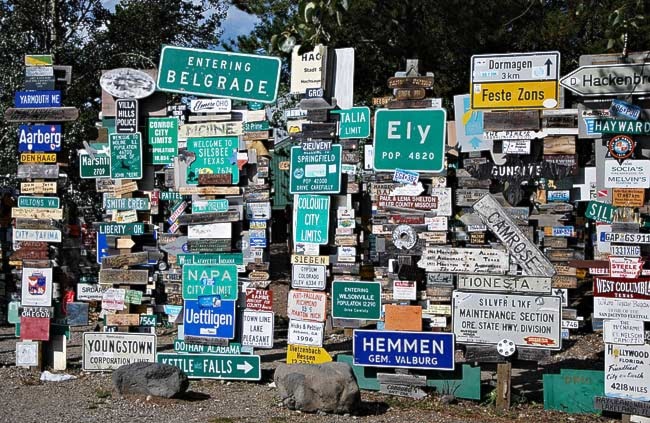The boundary line between the Yukon and Alaska was not always clear cut. In fact, nobody knew precisely where the line ran for almost 75 years.
A line of division had been drawn up between the Russians and the British in 1825 that included a strip of land along the Alaskan Panhandle that would extend no more than 50 kilometres inland from the coast, but that left the details open to interpretation. It really didn’t matter much until gold was discovered in the Klondike in 1896; then, it became an issue of international concern.
Canada contended that the 50-kilometre line would leave the head of Lynn Canal, and Skagway, in Canada, while the Americans maintained that the land all the way to Tagish in the interior was theirs.
In the end, the matter was resolved by Clifford Sifton, who was Canada’s minister of the Interior at the time. Sifton issued orders that the North West Mounted Police were to occupy the summits of the White and Chilkoot passes. He also sent Mounties to establish a detachment on the Dalton Trail.
Inspector A.M. Jarvis of the NWMP was dispatched to the Lynn Canal with 20 men and orders to establish a station at Rainy Hollow. They landed at Haines Mission (Haines) in Alaska the middle of April 1898, and immediately struggled up the Chilkat valley to their destination.
When Jarvis arrived at Jack Dalton’s cache on the Klehini River, he could go no farther. Rainy Hollow was still covered by six metres of snow.
The Mounties immediately set about constructing their headquarters within spitting distance from Dalton’s Cache at a location opposite where today’s customs office is located. They built an impressive post consisting of a half-dozen buildings arranged around a parade square with a flagpole in the middle. Using a nearby limestone outcrop, they were able to manufacture their own plaster for chinking the logs, giving the buildings a very decorative appearance.
As soon as weather permitted, they set off to patrol the interior and commenced the construction of small posts at Dalton House at the northernmost reach of the Tatshenshini River, and below Five Finger Rapid on the Yukon River.
The duties of the Mounties were to patrol the area along the trail, collect duty on foreign goods entering Canada, monitor the trade of liquor, prevent forest fires, and keep a close eye on the stampeders passing through the country. As one traveller noted, “We might lose ourselves but the Mounties would always know where we were.”
During the summer of 1898 slightly over 1,000 travellers passed over the trail in one direction or the other, and the Mounties collected roughly $13,000 in duty and mining fees. They monitored the progress of several cattle herds including a bizarre procession of reindeer (and their herders), that was sent to save the starving miners of Dawson.
The traffic over the trail was highly seasonal, so there wasn’t much for Canada’s finest to do once winter set in.
Things settled into a quiet routine. The White Pass became the favoured routes for stampeders after 1898, especially when the railroad was built. As a result, traffic over the Dalton Trail petered out, except for the numerous cattle drives for which the trail was so well suited.
In 1901, there was a flurry of activity when a plot, devised by American conspirators known as The Order of the Midnight Sun, to overthrow the government of the Yukon, was uncovered. The Dalton Trail was to double its complement of police, but ultimately, the whole affair came to nothing.
An international tribunal established a provisional boundary line in 1899 that ran down the Klehini River to the mouth of the Chilkat River, so the Mounties established a border crossing at that point that they named Wells, and started patrolling the new territory. In November of 1903, a final decision was reached regarding the dividing line. Canada lost the provisional land from the 1899 agreement, but they held firm at Pleasant Camp.
By this time, the biggest challenge for the Mounties was boredom. There was very little crime to deal with and virtually no customs duties to collect. About the only excitement occurred one Fourth of July in the nearby mining town of Porcupine when, after demonstrating a Mounted Police ride, one of the Mounties, who was drunk at the time, rode his horse up the stairs to the Lindsay Hotel and through the front window.
Meanwhile, the superintendent of the force in this area was writing headquarters, seeking permission to close the detachment, so little was the need for the officers to be stationed there, but head office ignored these pleas. Underlying all of the duties of the Mounted Police on the Dalton Trail was a fundamentally important role that was fulfilled by their mere presence: sovereignty.
The Mounted Police maintained their presence at Pleasant Camp despite the fact that the main entry to southwest Yukon was now from Whitehorse. In fact, only eight miners went over the Dalton Trail in 1904.
Herds of cattle continued to move over the trail, but the numbers had greatly declined from a few years before. In 1904 and 1905, an international survey party hacked out the dividing line between the nations. In 1905, the Mounties manned the post only during the summer. The boundary line was cut along a line that ran carefully between Dalton’s Cache and the police encampment.
In the end, the Mounties had served their purpose, and one of the final perimeters of the new nation had been defined. The last cattle drive over the trail occurred in 1906. After that, the trail fell into disuse until the Haines Road was built during the Second World War.
Michael Gates is a Yukon historian and sometimes adventurer based in Whitehorse. His new book, Dalton’s Gold Rush Trail, is now available in stores. You can contact him at msgates@northwestel.net
